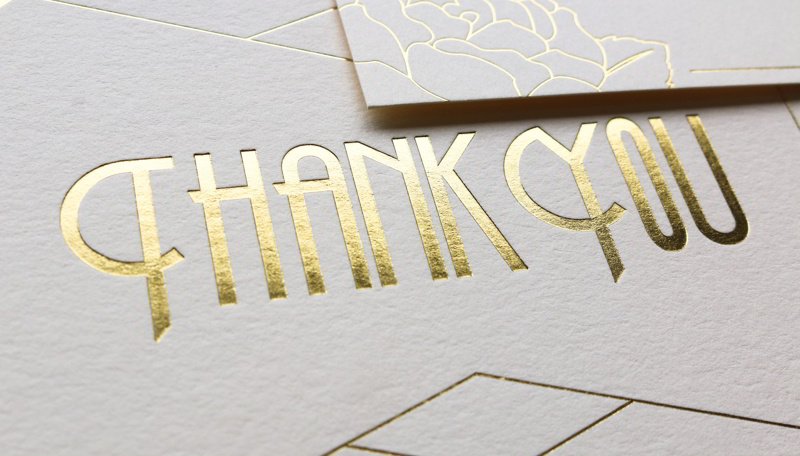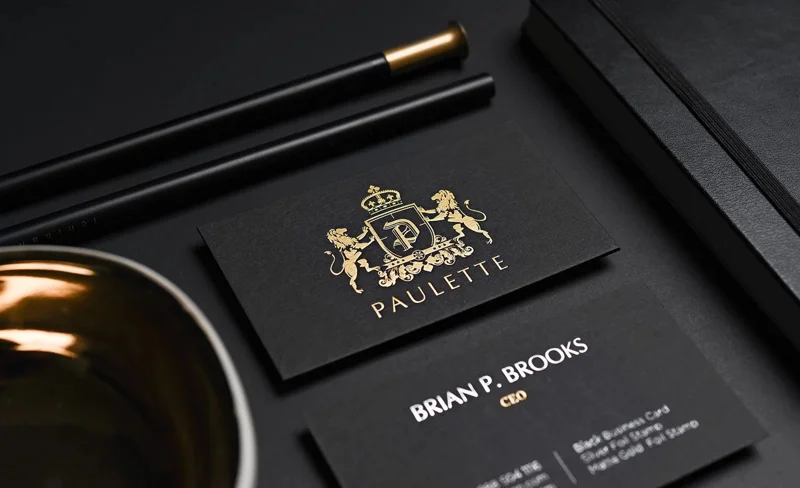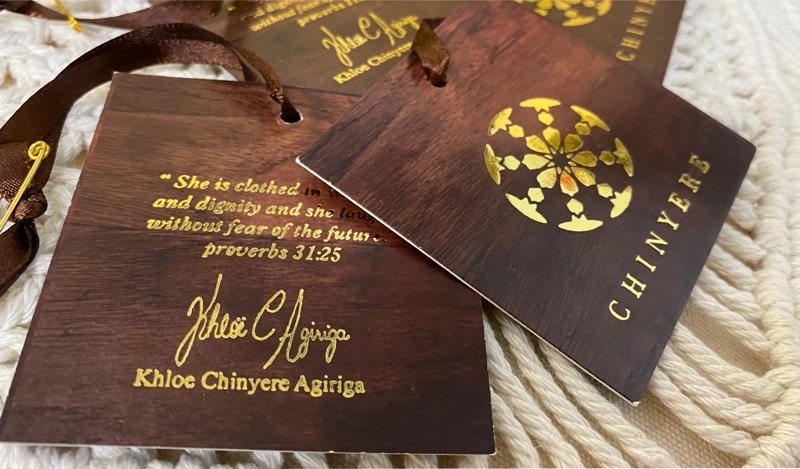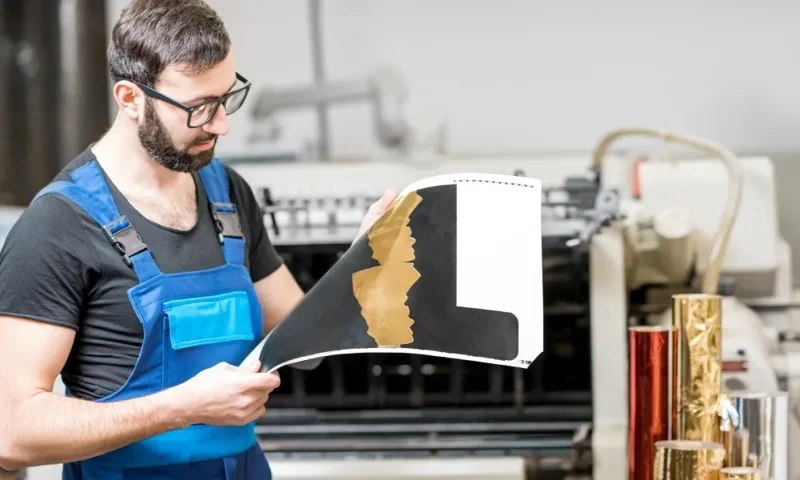Foil Stamping Explained: Process & Finish Comparisons
Elevate your apparel branding by understanding foil stamping (often called hot stamping). This specialty printing process uses heat, pressure, and custom metal dies to apply brilliant metallic or pigment foils onto hang tags, labels, and packaging, creating a premium, eye-catching finish.
Discover the core technique, explore diverse foil types (metallic, pigment, holographic), and learn how this method enhances perceived value, grabs attention, and improves brand recognition. This guide covers key applications, benefits, and practical considerations like cost and design limitations, helping you decide if foil stamping is the right investment for your clothing brand.
1. More than just shine
1.1 Defining foil stamping (often called hot stamping)
Foil stamping, frequently referred to as hot stamping, is a specialty printing process used in print finishing to add metallic or pigmented effects to materials like paper or cardstock. This technique utilizes heat and pressure to transfer a thin layer of foil from a carrier film onto a substrate (the material being printed on) using custom metal dies (engraved metal plates with the desired design). Because the die presses into the material, foil stamping is considered a form of relief printing, often leaving a subtle, tangible indentation along with the foil application, contributing to its premium feel.

1.2 How the core process works
Understanding how foil stamping achieves its distinctive look involves a few key steps. Often called roll leaf stamping because the foil comes in rolls, this heat transfer printing method is essentially a dry process, meaning no inks are involved. Here’s a simplified breakdown:
- Die creation: A custom metal die is precisely engraved with the specific design intended for foiling.
- Heating the die: The die is mounted onto the stamping machine and heated to a specific temperature.
- Positioning: The material to be stamped, such as a hang tag or label (substrate), is placed in position on the machine.
- Foil placement: A roll of foil is positioned between the heated die and the substrate. This foil has multiple layers, including the color/effect layer and a heat-activated adhesive layer.
- Applying pressure: The heated die presses the foil firmly against the substrate for a set duration and pressure.
- Transfer and removal: The heat activates the adhesive, bonding the foil layer to the substrate only in the areas where the die makes contact. As the die lifts, the excess foil is pulled away, leaving the design transferred onto the material.
1.3 Foil stamping vs. other finishes
When considering finishes for apparel tags or packaging, it helps to know how foil stamping differs from other common options:
- Foil stamping vs. metallic ink printing: While metallic ink printing can add shimmer, the ink sits on the surface of the material and generally offers less intense reflectivity and shine compared to the actual layer of foil applied during stamping. Foil stamping provides a distinctly more lustrous and often slightly textured shiny finish.
- Foil stamping vs. embossing/debossing: Embossing creates a raised design on the material, while debossing creates a recessed one. These techniques manipulate the material itself to add texture, without necessarily adding color or shine. Foil stamping, conversely, primarily adds the foil layer. However, it’s worth noting these techniques can be combined; a design can be foil stamped and embossed simultaneously (a “foil emboss”) for an even more pronounced tactile experience.
2. Exploring different foil types for clothing brand appeal
Choosing the right foil can significantly impact how your brand is perceived. Different types offer distinct looks and feel, catering to various aesthetic goals.
2.1 Metallic foils
Metallic foils are perhaps the most recognized type, prized for their brilliant shiny finish and high reflectivity. Common choices like gold foil, silver foil, copper foil, and the increasingly popular rose gold foil instantly evoke a sense of luxury appearance and established quality.
For apparel branding, these are classic selections often used for logos, brand names, or key text elements on hang tags and packaging, effectively signaling a premium product.

2.2 Pigment foils
Unlike their metallic counterparts, pigment foils offer solid, non-metallic colors. Their standout feature is opacity; they provide excellent coverage, making them ideal for printing light colors (like a crisp white) onto dark substrates (like black or kraft paper tags) – a task often challenging for standard inks.
These foils come in both high glossy finish and non-reflective matte finish options, offering versatility. Imagine a bold, matte blue logo on a white tag or elegant white text on a deep black card; pigment foils make these high-contrast designs possible and impactful.
2.3 Holographic foils
For brands seeking a more dynamic and contemporary edge, holographic foils are an excellent choice. These foils capture and refract light, creating shifting rainbow patterns, mesmerizing depth, and sometimes even a perceived 3D effect.
This eye-catching look resonates well with modern aesthetics, streetwear brands, tech-inspired fashion, or labels targeting a younger demographic wanting a distinct, modern look.
2.4 Special effect foils
Beyond metallics, pigments, and holographics, a range of special effects foils exists. These can mimic specific textured foils like wood grain, leather, pearl, or marble, or feature pre-set patterns. While less common for everyday apparel branding due to potential cost and specificity, they offer unique possibilities for highly targeted designs or limited-edition packaging aiming for a very distinct tactile and visual statement.
3. Why choose foil stamping for your apparel brand?
Integrating foil stamping into your branding isn’t just about aesthetics; it offers tangible advantages that can resonate with customers and strengthen your market position.
The visual richness and distinct tactile quality of foil immediately communicate a higher standard. This enhanced perceived value helps create a premium feel around your products. For consumers, elements like gold or silver foil often signal careful quality craftsmanship and attention to detail, subtly reinforcing a luxury appearance. This can be crucial for effective brand positioning, helping justify a higher price point and attracting customers who appreciate quality.
In a crowded retail space or scrolling through online listings, differentiation is key. Foil stamping makes hang tags and labels visually pop. The way foil catches the light provides a striking contrast to standard printed apparel tags, drawing the eye and improving visual appeal. This inherent attention-grabbing quality helps your products stand out from competitors, making that crucial first impression more impactful.

3.3 Enhancing brand recognition and customer memory
The unique look and tactile experience of foil stamping make your branding elements more memorable. When a customer handles a hang tag with a beautifully foiled logo, that physical interaction can create a stronger connection than simply seeing a printed design.
This memorable quality aids brand recognition; customers are more likely to recall your brand later. Over time, consistent use of foil elements can become an integral part of your brand identity, reinforcing recall and association.
Concerns about foil rubbing off are understandable, but when applied correctly, foil stamping exhibits good durability for its intended applications. The heat and pressure process ensures strong substrate adhesion, making the foil reasonably resistant to scuffing and typical wear during the handling lifespan of hang tags or packaging accents before the garment is used.
3.5 Versatility across key branding materials
Foil stamping shows considerable versatility across materials commonly used in apparel branding. It adheres well to various types of paper and cardstock (both coated and uncoated varieties), which form the bulk of hang tags and inserts.
Additionally, it can often be applied successfully to certain smooth plastic surfaces used for labels or specific packaging components. It’s worth noting, however, that heavily textured or very porous surfaces can present challenges for achieving clean, consistent foil application.
4. Where foil stamping shines
Foil stamping offers a touch of distinction across various branding touchpoints. Knowing where it works best helps maximize its impact for your apparel business.
Without a doubt, hang tags are the most frequent canvas for foil stamping in the apparel world. This finish instantly elevates standard apparel tags into perceived keepsakes. Common applications include:
- Logo foil stamping: Making the brand mark the standout feature.
- Highlighting the brand name: Giving prominence to the brand identity.
- Creating foil borders: Framing the tag design for a sophisticated look.
- Accenting small graphics: Adding a subtle shimmer to icons or design motifs.
- Foiling product line names: Differentiating premium collections.
Consider using gold foil for a classic luxury logo or silver foil for a sleek, modern brand name presentation on your primary hang tags.
4.2 Branded labels and stickers
Beyond hang tags, foil finds its way onto adhesive labels and stickers. These are often used as elegant packaging seals for tissue paper wrapping inside boxes or applied directly onto mailers for a premium touch.
Foil can also enhance certain types of printed labels (like satin or smooth plastic types used for branding or sometimes care instructions), adding a metallic logo or detail. It’s important to distinguish this from woven labels where metallic threads are used; foil stamping applies a metallic layer onto a printed surface.
4.3 Subtle accents on packaging
Foil stamping can add sophistication to your packaging without requiring full coverage. Think about using subtle accents, like a small foiled logo or monogram, on items like:
- Poly mailers: (Check material compatibility first, as not all plastics accept hot stamping well).
- Zipper bags: Again, ensure the plastic material is suitable for the heat and pressure involved.
- Printed belly bands or box sleeves: Foiling a small element here adds a premium touch to bundled items or boxes.
Using foil sparingly on packaging maintains an upscale look while managing costs. Always confirm with your provider if the specific packaging material is suitable for foil stamping.
4.4 Marketing materials
For special communications, foil stamping adds a memorable flair. Consider using it for:
- Invitations: To a brand launch event, trunk show, or exclusive sale.
- Marketing materials: Such as high-quality postcards or flyers promoting a new collection.
- Thank you cards or inserts: Included with orders, making the unboxing experience feel more special and reinforcing brand value.
These applications leverage foil’s premium feel for targeted marketing efforts or enhancing customer relations.
5. Practical considerations for small apparel businesses
While foil stamping offers significant aesthetic benefits, small apparel businesses should weigh some practical aspects before incorporating it into their branding strategy.
5.1 Understanding the die: Initial cost, detail, and reusability
A crucial component in foil stamping is the die, which is a custom metal die (essentially an engraved metal plate) bearing your specific design. Creating this die represents a primary setup cost. The material used for the die can vary; copper dies are often preferred for very fine details, while magnesium dies, zinc dies, or brass dies are common for general purposes.
A key point for budgeting is the reusability of the die. Once created, the same die can be used for multiple print runs of the identical design, meaning this initial setup cost is amortized over subsequent orders, reducing the per-piece price. Understanding this upfront investment versus long-term use is vital when evaluating cost factors.
5.2 Design limitations: What works best?
Foil stamping does have some design limitations compared to digital or offset printing. Extremely fine lines or intricate details can be challenging to reproduce cleanly. While specifics depend on the provider and material, a general guideline might suggest avoiding elements thinner than 0.2mm or 0.5pt line thickness.
Very small text, particularly if reversed out (where the background is foil and the text is the un-foiled substrate), can also fill in or become illegible. For successful artwork preparation, ensure your designs are created in vector artwork format (using software like Adobe Illustrator or CorelDraw).
It’s always best practice to consult your print provider directly for their specific guidelines regarding minimum line weights and detail complexity before finalizing your design.
5.3 Key cost factors to evaluate
Several elements influence the final price of a foil stamping project. Being aware of these cost factors helps in budgeting and making informed decisions:
- Die cost: The initial, one-time charge for creating the metal die.
- Foil area: The total size or surface area being covered by the foil directly impacts material usage and machine time. Larger foiled areas generally cost more.
- Foil type: Standard metallic foils (gold, silver) are typically the baseline cost. Holographic, pigment, or special effect foils usually carry a higher price tag.
- Quantity: Like most printing processes, higher order volumes typically result in a lower cost per piece, thanks to the setup cost being spread out.
- Substrate: The type and complexity of the material being stamped (e.g., heavily textured paper vs. smooth cardstock) can influence setup and running speed, potentially affecting cost.
- Additional processes: Combining foil stamping with other finishes like embossing or die-cutting will add to the overall project cost.
Viewing foil stamping as an investment in brand perception rather than just an expense can help justify the cost relative to the value it adds.
5.4 Factoring in turnaround time
It’s important to account for the turnaround time when planning projects involving foil stamping. The manufacturing of the custom die adds an extra step to the production schedule. Typically, you should anticipate an additional few business days (e.g., 3-7 business days, depending on complexity and the provider’s workload) added to the standard printing and finishing lead time.
Always confirm the estimated total turnaround time with your provider early in the planning process to avoid delays, especially for time-sensitive product launches or promotions.
5.5 A note on sustainability
Sustainability is an increasingly important consideration for brands and consumers. It’s worth noting that traditional foil stamping, due to the thin plastic carrier film and metallic layer applied to paper, can sometimes complicate recycling processes for paper goods, as it mixes materials.
However, the print industry is actively developing more eco-friendly options, including potentially recyclable or compostable foils. If environmental impact is a core value for your brand, discuss these newer foil alternatives and substrate choices with your print provider to find the most suitable solution.

6. Tips for success with foil stamping
Successfully implementing foil stamping requires thoughtful planning and execution. Following a few key steps can help ensure this finishing technique aligns with your brand and achieves the desired impact.
6.1 Define your goal: Is foil stamping the right investment?
Before committing to foil stamping, clarify your objective. What specific purpose should it serve for your brand? Are you looking to elevate a particular premium collection, enhance the perceived value of all your products through consistent tag design, or create a more memorable unboxing experience? Defining clear brand goals helps determine if foil stamping is the right investment.
For businesses operating on tighter budgets, consider a strategic use approach: perhaps start by foiling only the main logo on your primary hang tag rather than applying it across multiple branding elements. Aligning the application of foil with your desired brand perception ensures it contributes meaningfully to your overall strategy.
6.2 Choose the right foil to match your brand aesthetic
The type of foil you select significantly influences the message it sends. Consider your brand aesthetic carefully. Does your brand identity lean towards classic luxury (perhaps best suited for gold or silver metallic foil), clean minimalism (maybe a matte white or black pigment foil), or an edgy, modern vibe (where holographic foil could shine)?
The foil color and foil finish (e.g., shiny metallic, subtle matte pigment, dynamic holographic) should complement and reinforce your established visual language. Consistency across your branding elements helps build a cohesive and recognizable brand identity.
6.3 Prepare your artwork files correctly
Proper file preparation is crucial for achieving clean, high-quality foil stamping results. Ensure your artwork files are created using vector format software (like Adobe Illustrator or CorelDraw), as vector graphics scale without losing quality. Designate the elements intended for foiling on a separate layer within your file, clearly labeling it (e.g., “Foil Layer”).
Convert all text elements within the foil design to outlines (or curves) to prevent font issues during production. Always double-check your design against the minimum line thickness and detail requirements provided by your chosen printer, as these can vary. Requesting printer specifications or a template beforehand is highly recommended to avoid potential issues.
6.4 Partnering with an experienced provider
Choosing the right printing partner is vital, especially for specialty processes like foil stamping. Look for an experienced provider with a proven track record in foil application, particularly on materials commonly used for apparel tags and packaging.
A knowledgeable printer offers invaluable printer expertise. They can provide better guidance on design feasibility, advise on material compatibility for your specific substrate choices, and troubleshoot potential issues to ensure you achieve high-quality results. Their experience helps bridge the gap between your design vision and the technical realities of production.
7. Related questions
7.1 Is foil stamping expensive for a small business?
The foil stamping cost can initially seem higher compared to standard printing, primarily due to the setup cost associated with creating the custom metal die. This upfront investment is a key consideration for any small business budget. However, the per-piece cost decreases significantly with larger order quantities because the die cost is spread across more items.
Think of foil stamping as a premium finishing option. While it represents a greater initial outlay than basic printing, its impact on perceived value can justify the expense. For businesses managing costs, a strategic application – such as foiling only the brand logo on the primary hang tag rather than extensive coverage – offers a way to achieve a high-end look without breaking the bank. It’s about balancing the investment with the desired brand elevation.
7.2 Can foil be applied directly onto fabric garments?
The hot foil stamping process described in this article, which uses heated metal dies and pressure, is designed primarily for flat substrates like paper, cardstock, and certain plastics. Applying metallic or colored foil directly onto finished fabric garments typically involves different techniques. Methods like using Heat Transfer Vinyl (HTV) with a metallic finish or specialized screen printing foil applications are more common for garment decoration. These processes differ significantly from the die-based hot stamping used for tags and labels, both in application method and the types of foils used. It’s important to differentiate between fabric foil stamping methods and the paper/card-based process discussed here.
7.3 How long does a foil stamping order usually take?
Expect a longer turnaround time for orders involving foil stamping compared to standard print jobs. The primary reason is the die creation time, which adds an extra step to the production timeline. Generally, allow for an additional 3 to 7 business days on top of the regular printing and finishing schedule, although this can vary based on the complexity of the die and the printer’s current workload. This additional lead time means planning is crucial. Always confirm the estimated foil stamping time and overall production schedule with your chosen provider when placing your order to ensure it aligns with your project deadlines.
Read more:
Foil stamping undoubtedly offers a significant opportunity for brand elevation, lending a premium finish to essential apparel branding components like hang tags and labels. Its ability to enhance visual appeal and perceived quality makes it a powerful tool for differentiation in a competitive market.
While it involves specific design considerations, setup costs, and slightly longer lead times, foil stamping represents a worthwhile investment for brands aiming to cultivate a higher-end image or simply make their products more memorable. Weigh the undeniable benefits against the practical factors of cost and complexity for your unique situation. If you’re considering adding this touch of sophistication, consulting with an experienced packaging specialist can provide personalized advice and help determine the best way to incorporate foil stamping into your brand’s journey.






















